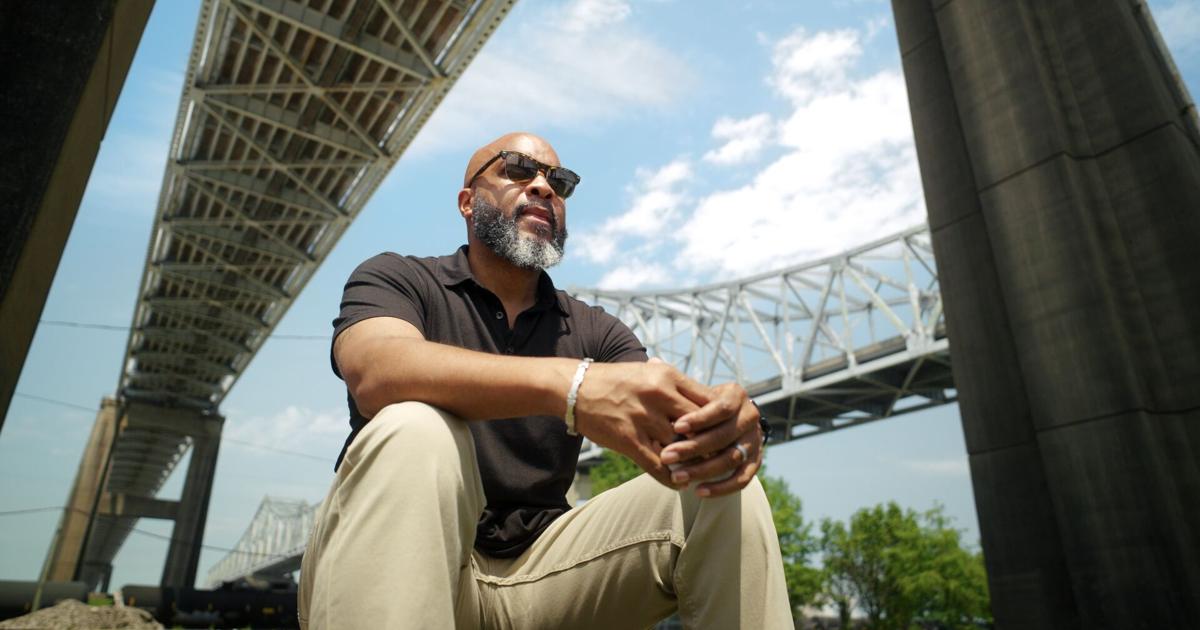Journalist Trymaine Lee was a cub reporter at The Times-Picayune in 2005 when Hurricane Katrina struck, part of the team that won a Pulitzer Prize in 2006 for its coverage of the storm. Even though he left the city long ago and now lives in Brooklyn, New York, he knew as the years passed that he would eventually come back and tell the stories of recovery both in New Orleans and on the Gulf Coast.
Over the last 20 years, he’s covered stories of racial injustice and the quest for equality. As a national correspondent for MSNBC, he led coverage of the killing of Michael Brown Jr., and the Ferguson uprising in its aftermath.
But, 18 months ago, with the 20th anniversary of Katrina approaching, Lee determined it was time to make plans for the documentary that would tell the story of rebuilding, through the voices of those who never left.
Those initial seeds would become the compelling documentary, “Hope in High Water: A People’s Recovery Twenty Years After Hurricane Katrina.” Lee is the executive producer and host of the film, which is directed by Haimy Assefa.
Initially, Lee reached out to the W.K. Kellogg Foundation for support. That philanthropic organization provided $27 million in emergency funding to those in need after Katrina and has continued its support ever since. The nonprofit was very interested in a film that would aid its mission of creating conditions where all children can thrive.
How things have changed since Hurricane Katrina
The documentary is broad in its scope, tackling topics that were problematic before and after Katrina.
It includes subjects as varied as premature births, toxic pollution along Louisiana’s industrial corridor, the root causes of violence, longevity rates in the Black and White communities, the New Orleans school system before and after Katrina, the attempted erasure of particular neighborhoods along the Gulf Coast and the erosion of the wetlands.
“It was never just about the storm,” said Lee. “The levees were eroding before Katrina, the school system wasn’t working, and pregnant women in poor communities didn’t have access to prenatal care. The hurricane shed a light on all these problems — and more. By getting on the shoulders of those who have been doing the hard work since Katrina, we were able to show just how things have changed.”
It’s the story of people who learned to bend but not break. This film is not a recitation on the destruction that upended the city, but rather a focus on the way people resolved to make changes for their own betterment as well as that of their communities.
“The biggest takeaway for me was the resolve of the people who suffered not just the loss of their homes and memories, but who lost loved ones as well,” Lee said. “Couple that with being smacked in the face with the racialized nature of the response, the eventual failure with the Road Home monies, and even the formaldehyde in the FEMA trailers, and it would have been easy to give up. But people found the courage to try to heal themselves.”
Food deserts and untreated trauma
Take Johnshell Johnson, an education coordinator at Grow Dat, a youth farm in the middle of City Park. She lives in a part of the city that does not have grocery stores, because post-Katrina, many major chains did not return to areas wiped out by the storm.
And, while she is forced to buy food at smaller places with higher prices, she has resolved to learn how to grow her own fruit and vegetables and teach others how to do the same thing.
The film also explores the root causes of violence, much of it the result of untreated trauma on the part of the perpetrators. The documentary points to an African proverb, which says, “If a child is not embraced by the village, he will burn it down just to feel the warmth.” It’s about communities that take care of their own.
There’s a lot of finger-pointing when it comes to violent crime, but there’s a common denominator at its base, Lee noted. And, the absence of hope can proliferate generationally.
“Kids who grow up with food on the table, a family structure where there’s a regular paycheck, and who aren’t exposed to violence in their streets on a regular basis are already ahead of the curve,” Lee said. “We need to do more to shrink inequities. This isn’t just a Black and White thing. There’s no expanded health care for poor White people. It’s the underclass across the board which gets the short shrift.”
Progress was made, but now what?
Nowhere, Lee shows in the film, is that more apparent than when it comes to the air we breathe. Factories along the industrial corridor of Louisiana still emit pollutants. Many of the surrounding communities are poor, and without strong state and federal intervention, the issue will continue.
The film is quick to point out that all the problems pre-Katrina have not been resolved in the ensuing 20 years, but shows there have been real strides made, despite an administration that seems to be going in a different direction when it comes to the problem of racism.
“The current administration and their recent moves are not benign,” said Lee. “First, it’s punishing DEI, and now we’re re-erecting Confederate statues and renaming military bases, resurrecting the names of those who opposed integration.”
There’s no shortage of provocative topics in “Hope in High Water,” which will have its New Orleans premiere on Sunday, Aug. 24, from 5 p.m to 7 p.m. at the Ashé Cultural Arts Center. The documentary begins streaming on Peacock Aug. 22.
Email Leslie Cardé at lesliecardejournalist@gmail.com.
